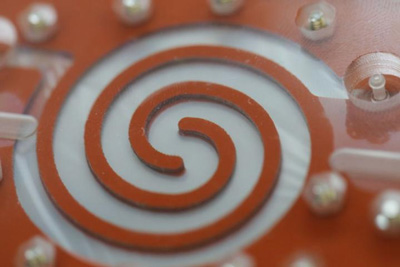HuMiX – the new human microbiome research tool
Posted: 11 May 2016 | Victoria White, Digital Content Producer | No comments yet
Scientists have proven that a model of the human gut – HuMiX – is representative of the actual conditions and processes that occur within our intestines…


The model of the human is representative of the actual conditions and processes that occur within human intestines. CREDIT: University of Luxembourg, scienceRELATIONS.jpeg
Scientists have proven that a model of the human gut – HuMiX – is representative of the actual conditions and processes that occur within our intestines.
HuMiX was developed by scientists from the Luxembourg Centre for Systems Biomedicine (LCSB) of the University of Luxembourg in collaboration with colleagues at the Luxembourg Institute of Health and the University of Arizona.
With HuMiX, the “Human Microbial Cross-talk” model, the researchers can analyse the complex interactions between human cells and bacteria, predict their effects on health or disease onset, and study the action of probiotics and drugs.
In HuMiX, human intestinal cells and bacteria can be cultivated together in a very small space under representative conditions. The apparatus consists of three chambers. The top chamber is the supply level, from which nutrients continuously flow down to the cell cultures below. Human cells grow on a very thin membrane in the middle chamber, while bacteria grow in the lowest chamber.
“With HuMiX, we can observe interaction of bacteria in real-time as they communicate with human intestinal cells,” says Professor Paul Wilmes, head of the LCSB Ecosystems Biology Group and inventor of the microbiome research tool.
For their tests confirming the validity of HuMiX experiments, the researchers employed pure cultures of various bacterial strains. “Using cutting-edge analytical methods established at the LCSB, we then studied how the gene activity and metabolism of intestinal epithelial cells change depending on the bacterial strain used in HuMiX,” Wilmes explains. “A comparison of our data with results from other research groups who obtained theirs from humans or animals showed strong agreement.” That means the research tool delivers a very accurate portrayal of the cellular and molecular processes taking place in the human gut. “With HuMiX we can also study processes so far inaccessible by existing experimental methods,” Wilmes adds.
“An unprecedented level of precision”
Dr Pranjul Shah, co-inventor of the HuMiX device, names one example of a metabolic process the LCSB researchers discovered with HuMiX: “In a co-culture of intestinal cells and a certain strain of the bacterial species Lactobacillus rhamnosus, we determined that production of a messenger of the nervous system, specifically the neurotransmitter gamma-aminobutyric acid or GABA, is stimulated in intestinal cells, indicating a mechanism by which the intestine may be communicating with the brain.”
Scientists had already seen evidence of this effect several years earlier in the brain of mice born with a completely sterile gut (which was devoid of all intestinal flora), when their gut was inoculated with similar Lactobacillus strains. “The ability of HuMiX to provide such responses can be attributed to the unique capability of the HuMiX model to allow cultivation of anaerobic bacteria along with human intestinal cells”, highlights Shah.
“We can now study these and similar effects at an unprecedented level of precision thanks to HuMiX,” Paul Wilmes continues. “There are clues, for example, that inflammatory processes can play a role in the onset of neurodegenerative diseases such as Parkinson’s. In HuMiX, we can introduce distinct bacterial species or whole communities into the artificial gut model whether these organisms trigger or slow down inflammation, or even introduce immune cells and neurons together with the bacteria.”
Related topics
Microbiome
Related conditions
Parkinson's disease
Related organisations
University of Arizona, University of Luxembourg



